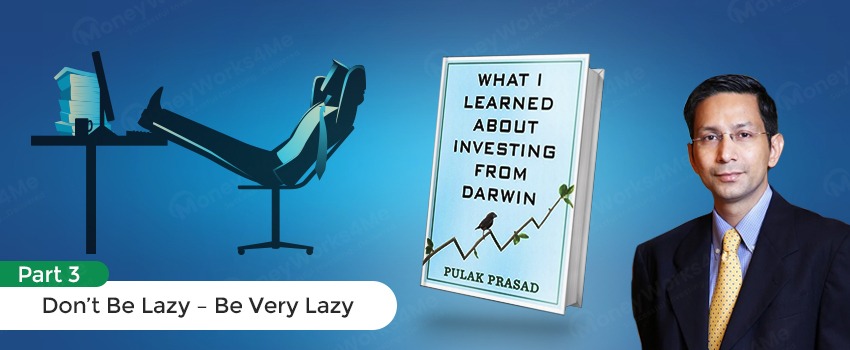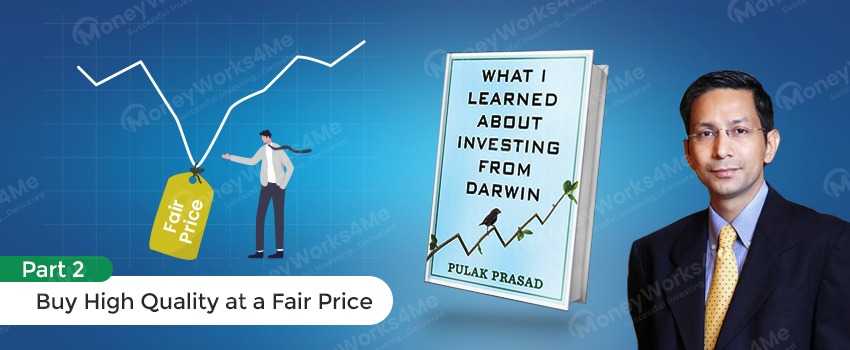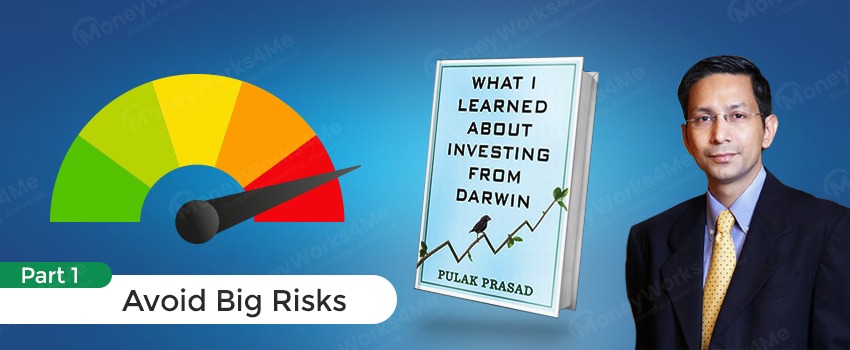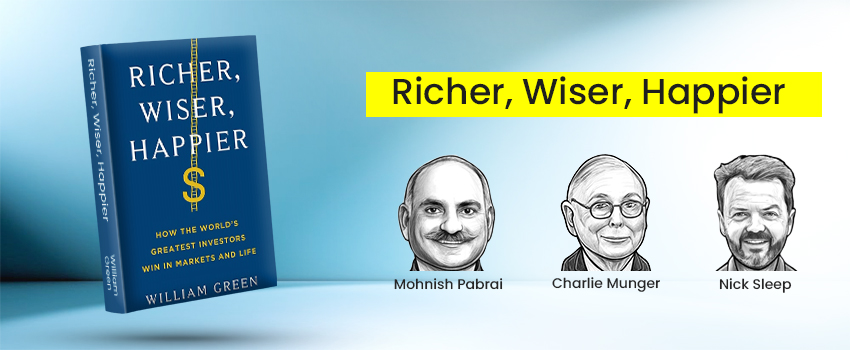“The more that you read, the more things you will know. The more that you learn the more places you’ll go.” Dr. Seuss
We have often come across a number of ‘Must Read’ books about investing. But, at the end of the day (& month), how many of us really manage to read through these gigantic reams of paper? A common complaint, we all have, is that they are too theoretical & indecipherable unless one has profound knowledge of economics, statistics, psychology & similar esoteric subjects. This book, “More Than You Know” by Michael J Mauboussin, decodes the indecipherable by tapping into a wide variety of knowledge from unconventional sources. Ever thought, what ants could teach us about the importance of diversity in efficient markets? What bees could reveal about the behaviour of crowds? This book will surprise you with such bizarre, yet immensely profitable insights that will change the way you look at capital markets.
The Philosophy of Investing:
The author introduces the leitmotif of this book; ‘Consilience’ in Part 1, wherein, he dwells into multiple fields like gambling & horse-betting to explain the investing in the best stocks by explaining the importance of process over results.
Process v/s Outcome: Why the house always makes money?
- In the long run, be it investment, betting or sports; best performers always emphasize process over outcome.
- In investment or gambling, the goal is to identify discrepancy between price & expected value by considering payoffs & probability.
- The idea is to be on the side with the positive expected value (i.e. Price < Expected Value).
Thus, the distribution of expected values is tilted in such a way that the house always makes money, as investors lured by frequent small gains, lose more money by making big losses in the long run.
Beating the Market: Investment Profession v/s Investment Business
- More than 52% of the actively managed equity funds underperformed the S&P CNX Nifty,also known as Nifty 50 in 2012.
- The main factor, that separated the losers from the remaining 48%, was the conflict between profession & business.
- The Investment process emphasizes on long term gains while Investment business focuses on short term gains, sale of products and income through fees, which may not be in the long term interest of the investor.
Why Fund Managers Fail: In the long term we are all jobless!
Our investment time-horizon is generally shorter than the period needed for payoff as per the Active Portfolio Management strategy. Active Portfolio Management is a strategy which aims to beat the index by finding out inefficiencies in the market through fundamental analysis, research, forecasts & judgement which needs time & patience. As a result, the system punishes short term under-performance that may result in the manager losing the job in the long run.
Psychology of Investing: Knowing the “You” & “We”!
The author explains the psychology behind investing that can give us some pointers as to how we should rein in the influencers, while performing the stock research.
Stress & How to avoid it à la Ulysses! The author believes that a major reason behind the underperformance of fund-managers is due to stress on short term results. He suggests that money managers must have a long term focus like Ulysses. The legendary Greek Sailor-King, made a pact with his crew, to be tied to the mast of his ship to avoid the melodious songs of the sirens, beautiful yet dangerous creatures of the sea, which would draw his ship to the rocks and sink it. Thus, he eschewed instant gratification, keeping in mind the long term objective of returning home after the Trojan War. Money managers like Ulysses should focus on gains from long term investment rather than the urge to get instant gratification from short term gambles in the market!
The Lollapalooza Effect: Commitment & Consistency, Social Validation and Scarcity are the three phenomena, which combine together to give rise to Lollapalooza Effect. This is an important factor which gives rise to the herd mentality.
The Herd Mentality: A herd mentality is said to be dominant in a market, if, many investors make the same decisions without considering their own inputs. Thus, when the herd is bullish, there is a boom & subsequently when the herd is bearish, there is a bust.
Fallacies of behavioral finance: Behavioral finance must be used to understand the inefficiencies at the crowd level and not the individual level due to the herd mentality prevalent in the market.
The Rise of Davids & Fall of Goliaths: The Role of Competition & Innovation
Market Leaders & New Challengers constantly change how the world works. With reduction in attention span, product lifecycles and market dominance of companies have shortened immensely, thus, opening a smaller window to make gains.
Innovation – here to stay: Owing to major advances in science & technology, innovators who have created new ways to solve problems have replaced antiquated & obsolete technologies. Modern Society has rewarded the innovators while mere implementers of technology have been made redundant. This has created a spurt in creative destruction – New Challengers replacing Old Companies.
Outperformers – Temporary Members of a Permanent Class: It has been observed that the companies that replace the Old Guard are themselves subject to replacement, once they cross a specific size.
Rapid Evolution of Companies: The lifecycle of a fruit fly can be studied over generations due to their 20 days long life-span. Hence, they are preferred by scientists to study evolution. Similarly, modern day companies, owing to the pressure of competition & innovation have markedly lower life-spans and one can study their entire life-cycles. Thus, we can have a better understanding of their evolution to gauge their and their successor’s sustainability in the long run.
The mistakes soothsayers make! Stock markets being non-stationary cannot be explained by experts through past parameters. Parameters like P/E Ratio should be interpreted taking into account growth, inflation, taxes, risk-propensity and economic structure.
Why turnarounds are rare?
Companies that generate high returns, attract capital & competition, thereby, pulling down the returns to cost of capital. Again, companies that underperform see flight of capital, causing returns to rise up to cost of capital. Thus, turnarounds are rare.
Attaining Consilience: The Unity of Knowledge!
In the final part, the author reverts to his theme of unifying disciplines of knowledge to arrive at insights into our decision making. Here, he uses science to explain and fill the gaps that exist in financial theory. He also details as to why our innate cause & effect thinking misleads us to wrong decisions.
Importance of Diversity: Diversity of knowledge is important as it gives a multi-dimensional perspective to a given investment issue. Diversity of approaches ensures the efficiency of markets by preventing positive feedback of herds. In investing one must use diverse approaches & tools like value investing, growth investing, fundamental & technical analysis as appropriate to the situation.
Swarm Intelligence: Markets in some ways behaves like a hive. When investors are heterogeneous, stock prices are efficient. The moment majority of investors think alike, excesses are committed resulting in corrections and inefficiency.
Solving problems in a herd: Author claims that more often than not, predictions of the crowd beat individual predictions in accuracy, thereby ensuring efficiency of the market.
When a small slip triggers an avalanche: In real world, elegant models predicted by finance theory underestimate the probability of extreme events due to the ‘Fat-Tail’ effect. Thus the relationship between risk & reward is not always linear and may expose us to disproportionate risk.
The folly of listening to others: Due to our innate availability bias, we look at information that is available easily but overlook what is applicable.
‘Big’ is Rare – Zipf’s Law: The market is a complex adaptive system & thus we can’t explain its behaviour using cause & effect. As per Zipf’s law, larger companies tend to have lower potential for growth & thus are rarer; smaller companies have a much higher potential for growth and multiplication.
To sum up, modern financial theory is inadequate in explaining the whims of the market and one must tap into various sources of knowledge to understand deviations and plug the gaps in ones philosophy to make well-educated decisions.
In summary, this book is a page-turner and a good starting point for those uninitiated to financial literature, as a first book on stock markets for beginners. and will help understand the nature of the market in its totality, including its inherent uncertainty & risk. To accomplish one’s investment objective and gain an edge over the others in identifying blue-chip stocks, it is necessary to have a differentiated point of view. “More Than You Know” gives us that differentiated perspective.
If you liked what you read and would like to put it in to practice Register at MoneyWorks4me.com. You will get amazing FREE features that will enable you to invest in Stocks and Mutual Funds the right way.
Need help on Investing? And more….Puchho Befikar
Kyunki yeh paise ka mamala hai
Start Chat | Request a Callback | Call 020 6725 8333 | WhatsApp 8055769463









